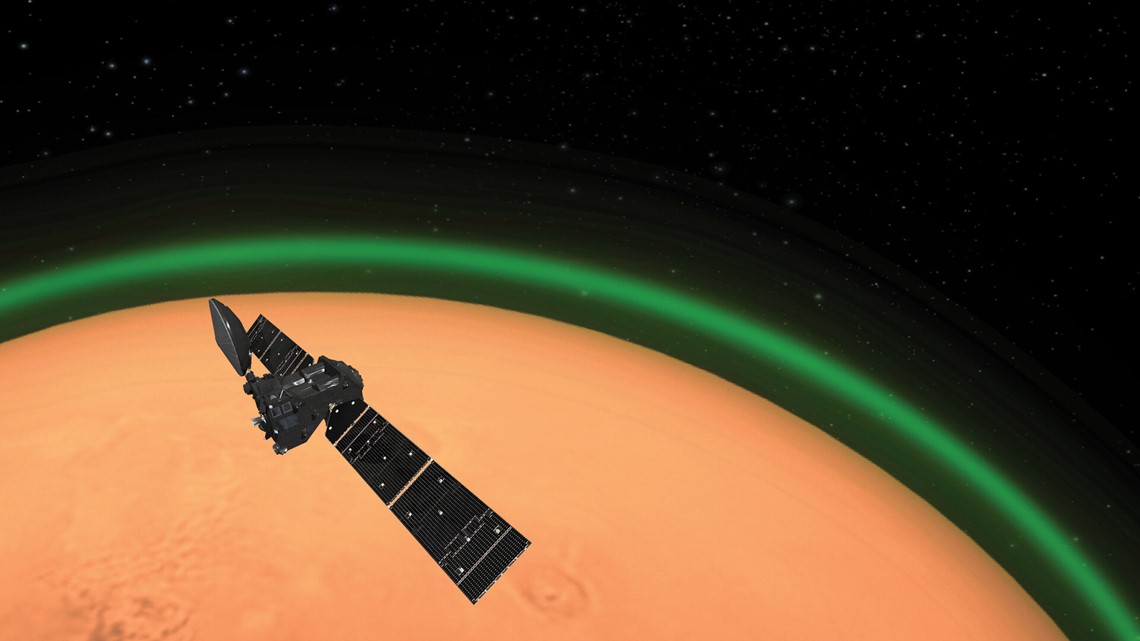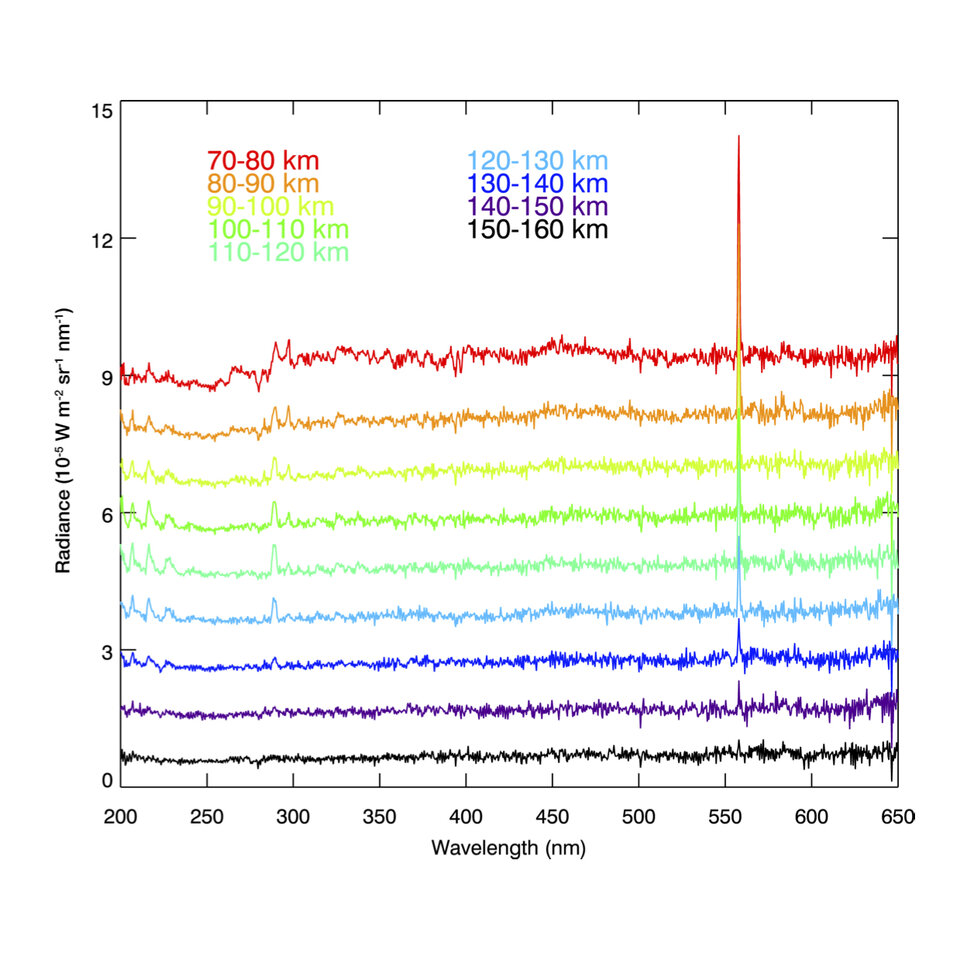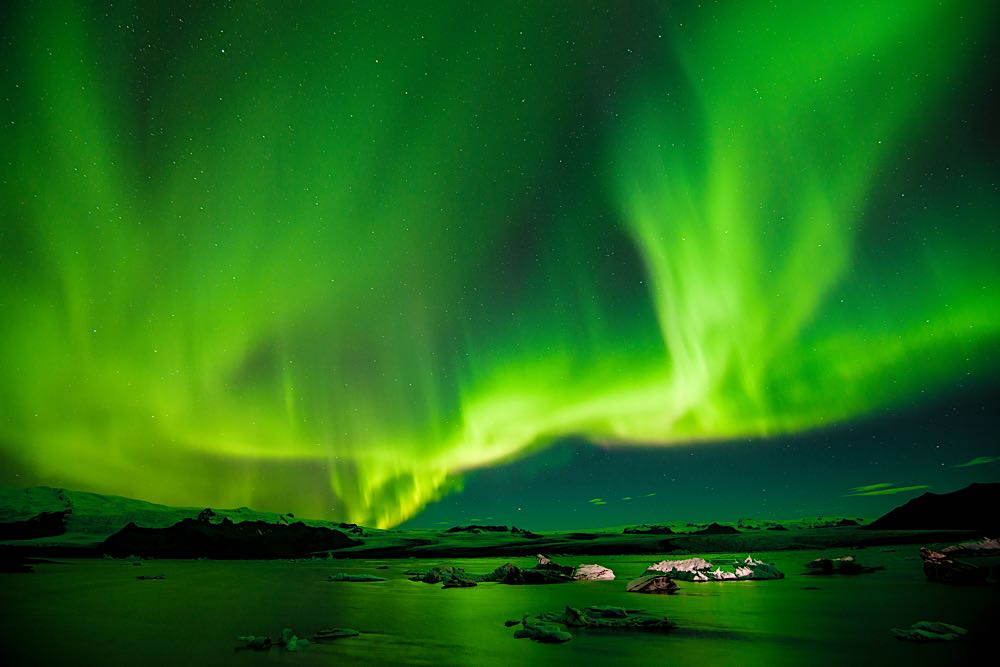A green glow spotted in the atmosphere of Mars has been discovered by the ExoMars Trace Gas Orbiter. This emission has been seen on our planet before, more commonly known as the Northern Lights, but it’s never been spotted around any other place beyond Earth.
The green emission is a characteristic of oxygen. On Earth, Skywatchers at high latitudes can see this signature in the ethereal, known as polar auroras which are made of the energetic electrons from interplanetary space hit the upper atmosphere. However, auroras are not focussed in quite the same way on Mars because the planet doesn’t have a global magnetic field, but such emissions nonetheless exist and have already been observed.
“One of the brightest emissions seen on Earth stems from nightglow.”
– author of the study, Jean Claude Gérard
It’s caused by the interaction of sunlight with atoms and molecules in the air, which generates a subtle but continuous light. This emission is hard to see, even here on Earth. The opposite effect, day glow, the diurnal component of this constant emission, is even harder to spot and it’s driven by a slightly different mechanism.

The scientists were able to spot this emission using a special observing mode of the TGO. One of the orbiter’s advanced suite of instruments, known as NOMAD (Nadir and Occultation for Mars Discovery) and including the Ultraviolet and Visible Spectrometer (UVIS), can observe from various configurations, one of which positions its instruments to point directly down at the martian surface – also referred to as the ‘nadir’ channel. This instrument sees the oxygen at very particular altitudes.
“Previous observations hadn’t captured any kind of green glow at Mars, so we decided to reorient the UVIS nadir channel to point at the ‘edge’ of Mars”
– co-author Ann Carine Vandaele
They scanned altitudes ranging from 12 to 248 miles from the Martian Surface twice per orbit. When they analyzed these datasets, they found the green oxygen emission in all of them.

To better understand this green glow around Mars, and compare it to what we see around our own planet, the scientists dug further into how it was formed. They modeled this emission and found that it’s mostly produced as carbon dioxide, or CO2 is divided up into its constituent parts: carbon monoxide and oxygen. Also seen were the resulting oxygen atoms glowing in both visible and ultraviolet light.

Simultaneously comparing these two kinds of emission showed that the visible emission was 16.5 times more intense than the ultraviolet.
“The observations at Mars agree with previous theoretical models but not with the actual glowing we’ve spotted around Earth, where the visible emission is far weaker.”
This understanding is key to characterizing planetary atmospheres and related phenomena. By deciphering the structure and behavior of this green glowing layer of Mars’ atmosphere, scientists can gain insight into an altitude range that has remained largely unexplored, and monitor how it changes as the Sun’s activity varies and Mars travels along its orbit around our star.
Nit: The aurora is caused by the solar wind, not sunlight. This post seems to be using the two somewhat interchangeably, but light is made of photons, while the solar wind is a stream of charged particles. Sunlight does also interact with the atmosphere (for instance, the ozone layer is actually created by ultraviolet light), but is not the cause of the aurora.
Hey! Yes, you are right, particles escape from the star from the sunspot regions on the surface, hurting particles of plasma, known as the solar wind, into space. But when we talked about the interaction of sunlight we are referring to the green glow on Mars. Hope it helps!